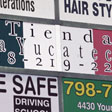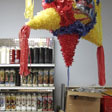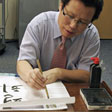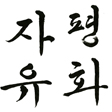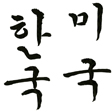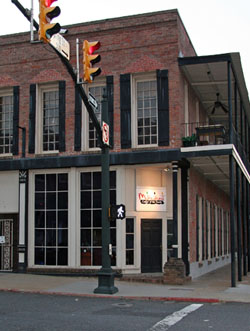By Laura Marcus Green
Other Shreveport Articles
Cultural Preservation: Keeping the Flame Burning for Future Generations
Seasons and Cycles — Festivals and Rituals Mark Life's Rhythms
Of Hand and Heart: Handwork Connects Family and Community
As part of its New Populations Project, the Louisiana Folklife Program conducted a survey of the Shreveport-Bossier City area in 2011 to identify immigrant communities living in the area and document the cultural traditions they perpetuate in northwestern Louisiana. This research has resulted in the discovery of traditional art forms that have been handed down for generations in other countries and have taken root in new soil, enlivening Shreveport-Bossier City's cultural landscape.
The Shreveport-Bossier City Convention & Tourist Bureau promotes the area as "Louisiana's Other Side." This moniker fits. Many Shreveport-Bossier City residents consider northwestern Louisiana to be distinctive from the southern and central regions of the state. Locals feel that northwestern Louisiana is more akin culturally and geographically to east Texas and southern Arkansas than to New Orleans or Lafayette. In fact, this tri-state area is known collectively as Ark-La-Tex.
Multicultural community members embrace this regional identity. Although there are a growing number of ethnic businesses in Shreveport-Bossier City, Dallas, and Houston remain the go-to cities for specialized groceries or services not available locally. These metropolitan centers are home to significantly larger ethnic enclaves and offer the culturally specific amenities that go with them. Yet, many immigrant community members in Shreveport-Bossier City express a preference for living in a smaller place, at a more human scale.
A short-term immersion in the area provided time enough to reveal a vibrant tapestry of ethnic and artistic traditions in northwestern Louisiana. Yet by nature, it was not an exhaustive survey of all cultural groups and art forms to be found in the area. What follows, then, is a snapshot of Shreveport-Bossier City's multicultural communities, seen through the lens of traditional art forms that embody our common humanity, while illuminating fascinating differences wrought by cultural and historical context, and personal experience.
Cultural Preservation: Keeping the Flame Burning for Future Generations
"You know, sometimes you just take certain things for granted. You've lived with them all your life, you're always around them. You just think, well everyone is of some ethnic culture and they constantly practice it, and they don't. I think you don't realize that till you're an adult . . . that this is really special and really unique to my ethnic heritage or to someone else's ethnic heritage. And then you realize, well I am really different and unique and special, and I should be proud to show that. Because my parents always taught me, be proud to say you're Greek. Don't hide it, don't be embarrassed to show that."
—Georgia Booras, Shreveport Greek community
In an era of globalization, rapid communication, and cultural homogenization, what motivates people to plant the seeds of their culture in a new home? Immigrants often feel a dual pull to retain their cultural identity while integrating into the host society. First generation immigrants—those who were born in other countries and emigrated to the United States—generally want their children to succeed in the U.S. Second generation immigrants—those who are born in the U.S. to immigrant parents—often embody their parents' hopes and dreams for a good life in a new country. While second and subsequent generation immigrant youth feel a desire or pressure to assimilate into American culture, they may also want to connect with their cultural roots.
How are Shreveport-Bossier City's ethnic communities maintaining their cultural identity while becoming part of the larger society? The folklife survey of the Shreveport-Bossier City area included cultural groups and traditional artists whose ancestors have been in the area for several generations, those who have been in the area for only a few years or less, and several shades of gray in between. Regardless of their cultural backgrounds or how long they have been in the U.S., members of ethnic communities are concerned that their children and grandchildren learn about their heritage, with the hope that they might understand something of their cultural roots and keep valued traditions going for future generations.
One path towards cultural preservation is the formation of community-based organizations through which members celebrate cultural holidays together, coordinate educational opportunities for youth, and present programs for sharing their culture with the public. Fil-Am Ark-La-Tex, serving the tri-state region's Filipino-American community, is an example of this type of organization. Fil-Am Ark-La-Tex puts on activities that reflect the Philippines' cultural diversity, sustaining traditions that are meaningful to its members while raising the broader public's awareness of Filipino heritage. Throughout the year, the group organizes and participates in events that feature Filipino cuisine, music, and dance.
In the Shreveport-Bossier City area, three organizations preserve and present Indian culture. The Indian Association of Shreveport and Bossier City sponsors a series of activities throughout the year that bring members together to perpetuate their culture while teaching young people about their heritage. The India Studies program at Louisiana State University-Shreveport (LSUS) was established by the Indian community to promote an awareness of Indian culture both within the academic community and beyond. The program offers elective courses on Indian culture and collaborates with the local Indian community on such activities as special presentations on India, invited cultural performances, and teacher training workshops to promote educational programs about India in local schools.
In some cases, houses of worship fill the role of cultural gathering places, as in the case of the Sadhu Vaswani Hindu Cultural Center and Hindu Temple and St. George Greek Orthodox Church. Because of Shreveport-Bossier City's smaller size, local ethnic organizations and communities of worship may bring together under one roof culturally, or even spiritually, diverse congregants who share the same nationality or faith. The Sadhu Vaswani Hindu Cultural Center and Hindu Temple in Shreveport offers weekly services, as well as services for special times on the Hindu calendar such as Divali and Lord Krishna's Birthday, among others. The center/temple also provides spiritual training and classes in cultural traditions for both youth and adults. The Indian community is graced with a number of traditional artists who enrich cultural events with their talents, including dance and music.
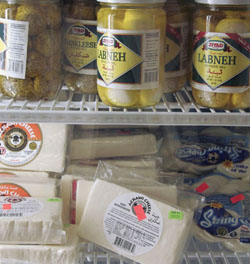
St. George Greek Orthodox Church was founded by the area's earliest Greek settlers, who established a community in Shreveport's Highland neighborhood in the early twentieth century. Today, descendants of the St. George's original congregants, as well as those who have immigrated directly from Greece, carry on cultural traditions, including handwork, cooking, and dance. The church's historic and more recent Greek Byzantine icons provide a visual focus for worship and a cultural connection for those of Greek descent. Over the years, St. George's congregation has become culturally diverse, as Orthodox people from different countries have moved to Shreveport.
Some cultural communities are several generations removed from their ancestors' immigration to America. Many northwestern Louisiana residents trace their ancestry to Ireland and Scotland. With the passage of time, direct connections to the Old Country and its cultural traditions fade away, as people identify more with their American and regional heritage than with their ethnic roots. The Scottish Society O Tae Louisiana Highlands was founded in the early 1990s to foster a greater awareness of Scottish and Celtic heritage in the Shreveport-Bossier area and the South.
The Society develops activities to teach its members and the general public about Celtic culture and history. In addition to monthly educational meetings and participation in a regional Celtic network, the Society sponsors two major events each year. In January, the Robert Burns Banquet & Ball commemorates the birthday of the great Scottish poet. In the spring, the Society hosts its annual Scottish Tartan Festival, held in conjunction with Tartan Day, which falls on April 6th. A celebration of Scottish heritage, Tartan Day marks the date in 1320 when the Declaration of Arbroath—the Scottish Declaration of Independence—was signed.
The Scottish Society counts among its members a host of traditional artists descended from Celtic ancestors, including musicians, storytellers and historians, instrument makers, and a woodcarver. Some call Bill Conly the "Pioneer of Celtic Music" in northwest Louisiana. The Conly family traces its roots to Cullen Thomas Conly, who emigrated to America during Ireland's Potato Famine in the mid-nineteenth century. Although he grew up hearing his grandfather's and father's generations recount their ancestor's journey to the United States, Bill Conly explains, "By that time, we were more entrenched Southerners than Irishmen." As far as Bill knew, the stories of his great-great grandfather's exploits were the only legacy he had inherited as a fifth-generation Irish-American. Yet, when Bill traveled to Ireland in 1990, he discovered that at least one thread of his Irish heritage that came down through the generations, after all.
The Filipino Community in the Ark-La-Tex Region: Coming Together for Culture and Community
Shreveport's Indian Community: Three Organizations, Shared Visions
Shreveport's Greek Community: Cultural Treasure Spanning Generations and an Ocean
Tunes and Tales Rekindle Celtic Roots: Bill Conly's Journey from Louisiana to Ireland
Seasons and Cycles—Festivals and Rituals Mark Life's Rhythms
Life's larger rhythms are played out through rituals, festivals, and other occasions. Members of immigrant communities may especially connect with their identity as they gather for cultural celebrations. During festivals and rituals, traditional art forms like music, dance, food, material culture, and other customs often express people's heritage, informing the ways they observe significant landmarks on the calendar or in their lives.
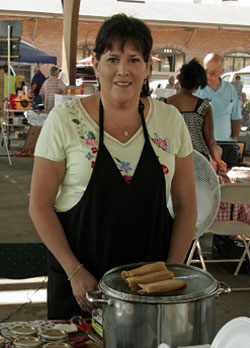
Cultural celebrations like Mexican Cinco de Mayo commemorate historical events. A large-scale function, Shreveport-Bossier City's Cinco de Mayo Fiesta invites the public to partake and learn, while fostering a sense of cultural rootedness among Mexican and Latino participants. The fiesta offers visitors an opportunity to taste locally prepared Mexican food and enjoy cultural entertainment. In 2011, the day-long Cinco de Mayo Festival offered participants diverse musical and dance performances by youth and adults, a chihuahua race, a jalapeño-eating contest, a magician act, food vendors, educational displays, youth activities, a car show, and an evening dance. Over the course of the day, both live and recorded musical selections offered dancers a range of options, from mariachi to hip-hop to salsa. With something for everyone, the dance floor was often full, as dancers young and old moved to the music of their generations. Cinco de Mayo Program Chair, Guillermo (Willie) Ortiz reflected that dancing to familiar music at the festival transports people back to their home countries.
At a smaller and more intimate scale, rites of passage like weddings and memorials bring cultural communities together to share personal milestones in the lives of individuals and families. While festivals often mark dates of historical or political significance, rituals tend to effect a personal transition, whether marking the union of two people in marriage or easing the passage from life to death. These life cycle passages tend to feature cultural traditions reserved for such occasions, such as Mexican ofrendas, or home altars, and Día de los Muertos (Day of the Dead) traditions, or Turkish traditional wedding songs.
Along with Cinco de Mayo, another traditional Mexican celebration finding its way onto the Shreveport-Bossier City cultural calendar is Día de los Muertos, or Day of the Dead. Día de los Muertos is a time when people stop to remember departed family members, friends, or even public figures. Across the United States, Mexicans and Mexican Americans perpetuate Día de los Muertos with ofrendas (offerings), or altars, among other traditions. Mexican-American traditional and contemporary artist Conchita Iglesias McElwee is often called upon to help facilitate public Día de los Muertos celebrations by lending her cultural knowledge and artistic talent to the occasion. Conchita is a Shreveport native who grew up at a time when there were few Latinos living in the area. Her artwork embodies a fusion of cultural and aesthetic influences, as she finds her way back to her cultural and family identity through participation in Mexican traditions and her own creativity.
Shreveport-Bossier City is home to a small Turkish community. Among Turkish traditional marriage customs is the henna party, which is held for the bride the night before her wedding day. Bossier City resident Neslihan Hoover remembers participating in henna parties during her youth in Turkey, when she accompanied her family to weddings. Although it has been some time since she sang at henna parties, she still remembers "the old traditional songs from long ago," as she calls them. Her deep and lilting voice still brings these gems to life.
Latino Cultural Rhythms in Shreveport-Bossier City: Ballet Folklorico and Salsa Dance
Mexican Home Altars and Día de los Muertos Traditions: Finding the Way Home Through Art and Heritage
Turkish Traditional Music: Songs to Make the Bride Cry
Of Hand and Heart: Handwork Connects Family and Community
Reflecting individual and community aesthetics, folk arts can be so integral to people's daily lives, they may not be considered "Art," per se. An embroidered cloth, a lullaby, or a recipe may be part people's everyday worlds. People often think of traditional arts as "just what we do." Traditionally in many cultures, handwork has been a valued domestic art, a rite of passage, and a means of maintaining family connections. In Arabic, it is known as a jihas, in Greek, prika. English speakers use the French word trousseau to refer to the collection of handmade linens a young woman prepares, sometimes over a decade or more, to take to her new home upon marriage. In some cultures, a woman's skill in such handwork traditions as crochet, embroidery, weaving, sewing, or others enhance her desirability as a wife who will keep her household supplied with beautiful linens and clothing. When handwork was the primary or only source of these textiles, mothers taught their daughters at a young age to make and embellish items for daily use, as well as special occasions. For many, the time spent doing handwork, whether alone or gathered with others, was a reward for completing one's household chores. Although much may have changed about handwork's place in society over the years, not to mention the materials, tools, and designs with which it is made, its relaxing and meditative nature may be among its most enduring qualities.
Handwork is a good realm in which to explore the dynamic nature of folk arts, as cultural traditions inevitably change with the times. Many traditions have roots in the way people lived their daily lives during earlier eras in history. In many post-industrial societies, traditional art forms like handwork, woodcarving, or pottery-making that were once necessary skills have been rendered impractical or obsolete by the ease of factory-made goods. Further, the prevalence of wage work has left people little time to make things by hand for daily use.
As manufactured items have become the norm in many societies, their handmade counterparts may take on symbolic value. Especially in immigrant communities where people are separated from their home countries, handmade traditional arts may accrue heightened significance, connecting people to their cultural identity or their loved ones far away. Yet, as newcomers find their way as in the U.S., getting swept up in the exacting pace of American life, many leave behind traditional pursuits. Those who do continue art forms like handwork, music, or dance in diaspora are treasured members of their cultural communities.
Palestinian cross-stitch embroidery offers insight into transformations in an art form over time, as well as continuity. Shreveport-Bossier City is home to a number of Palestinian women whose handwork traditions have accompanied them to life in a new home. Hanieh Salama grew up at a time when all girls learned to do cross-stitch embroidery, in order to make their own dresses for daily wear and special occasions. A generation later, Reema Samander had to ask her mother to teach her cross-stitch, as this tradition, formerly a hallmark of Palestinian women's identity, is no longer a standard part of a girl's upbringing. Hanieh and Reema continue to do embroidery because they enjoy the process and creating beautiful things for their homes.
Some art forms enjoy continued demand, in spite of changes in historical and cultural context. Like Hanieh Salama, Sultaneh Fasho learned to do cross-stitch when she was a girl, as a matter of course. While she enjoys wearing cross-stitch dresses and decorating her home with embroidered runners, pillows, and framed pieces, she has found another traditional creative outlet. Whether they buy dresses that are hand-embroidered or machine-made dresses, many Palestinian and Arab women still embellish their outfits with matching necklaces strung with beads of silver, semi-precious stones, and glass. Sultaneh makes traditional Arab jewelry for herself and others, to go with the dresses they wear on special occasions.
Cross-stitch embroidery is an art form that has multiple color and design iterations across the globe. Mexican handwork artist Socorro Flores cross-stitches and crochets linens in the traditional style of her home country. Many tabletops and other surfaces in her home are adorned with tablecloths, runners, and doilies made by Socorro and her mother. She also knits, crochets, and finger weaves scarves and ponchos for herself and others.
Palestinian and Mexican Handwork Traditions in the Shreveport-Bossier City Area
Conclusion
The perpetuation of traditional art forms provides immigrant communities with a sense of home and belonging, while contributing something of value and beauty to the cultural landscape. Pastor Young Doo Kim administers to his congregation at the Korean Presbyterian Church in Bossier City, one of three Korean churches in the area. He also practices a traditional art form that few people do any more: Korean calligraphy. Pastor Kim was a little boy, not yet attending school, when his father taught him to use a paintbrush and ink. Today, his father is up in years and no longer practices this art form. Pastor Kim remembers his father's calligraphy as beautiful, close to perfect.
When he was in elementary school, Pastor Kim chose calligraphy as his special activity, or elective, as it would be called in American schools. Pastor Kim continued to practice calligraphy through middle school and high school. He displayed his work publicly for the first time as part of an open house at his high school. For that show, Pastor Kim chose a piece of calligraphy with the words "Honor your parents." The words are from Ephesians, Chapter 6, Verse 1, the first commandment. Interestingly, this quote resonates with a teaching from Confucius: honor your parents, be loyal to your ruler, and have good relationships with your friends.
Following his military service, Pastor Kim attended Presbyterian seminary in Seoul. He has been the pastor at the Korean Presbyterian Church in Bossier City since 2006. Both the Korean Presbyterian Church and the Bansuk Baptist Church, another Korean church in Bossier City, offer Korean language classes for children. Pastor Kim has also taught Korean calligraphy in the past, something he would like to do again. He sees calligraphy as an art that is almost lost.
Korean calligraphy recalls a time when the brush was the only writing tool. Until fifty years ago, calligraphy was used for all official documents in Korea. Korean art is one area where this tradition is still in use. Some artists are also calligraphers, incorporating Korean characters into their work. At the time Pastor Kim began learning calligraphy in elementary school, he used pen and ink for all of his classes. He recalls that carrying ink in his schoolbag could be a risky business, as the glass bottle occasionally broke and created a mess! From pen and ink, Pastor Kim transitioned to using a fountain pen, and then moved on to ballpoint pens. When he was in high school, Pastor Kim remembers that people wrote beautifully. In the 21st century, the prevalence of computers has contributed to calligraphy's decline.
Today when he does calligraphy, Pastor Kim finds that concentrating on his work relaxes him. He occasionally demonstrates Korean calligraphy at citywide events, like the Multicultural Center of the South's Taste of Culture festival. Sitting at a small Korean scholar's desk, he creates calligraphy pieces that he gives as gifts to festival goers to take home. At these events, he often draws words that perhaps reflect his hopes for the world: Cha Yu, meaning Liberty and Pung Wha, or Peace.
He also writes the names of his native country, Korea, and of his adopted home, the United States. Hangok is the Korean word for Korea, meaning Great Country. The Korean name for America is Miguk or Beautiful Country. Pastor Kim's artful words are a bridge between countries, between worlds. They exemplify the power of traditional arts to connect people across cultures, creating opportunities to transcend and appreciate cultural differences while finding common ground.
Shreveport-Bossier City is home to diverse cultural groups and the traditions they bring from their home countries. The Multicultural Center of the South (MCCS) is a unique organization through which people can learn about and connect with Shreveport-Bossier City's varied ethnic communities. The Center's Mission is: "to educate the general public and visitors about the rich diversity and history of Shreveport-Bossier, Northwest Louisiana, and the South." The MCCS provides a venue where diverse community members can share their cultures with the broader public and educate youth and adults about multiculturalism in the region. Key members of these communities serve on the MCCS Board, thereby bridging their own cultural groups and the umbrella organization devoted to supporting and promoting all cultures in the area.
The Center is home to permanent cultural exhibits that have been curated by MCCS Board members and friends of the organization. Visitors can wander rooms and hallways over two floors to see displays of clothing, artifacts, and artwork of all kinds from around the world. Each summer the MCCS puts on a festival, A Taste of Culture, which features cultural performances and traditional culinary traditions from around the globe. The Center has recently added an International Women's Day celebration to its annual calendar of events. The MCCS promotes multicultural understanding among youth of all ages, encouraging young people to tap their own creative and cultural resources and become contributing community members. Its youth-focused activities include Little Tykes Artists Exhibits, a Teen Council and annual Youth Summit, and a range of other educational activities that take place at the Center and in local schools. The Center is recognized and appreciated throughout the community as an educational resource that provides a vital service.
Shreveport and Bossier City's cultural treasure provides ample opportunity for people to explore a cultural traditions from around the world, and to learn about the area's multifaceted heritage through diverse artistic expressions. Consider trying a cultural restaurant or visiting an ethnic grocery store, attending a festival or cultural celebration, or taking an Indian yoga or Latino salsa dance class. This short-term survey reflects a glimpse of Shreveport-Bossier City's multicultural landscape. There are many stones left unturned. May the cultural traditions presented here be a springboard for your own exploration of Shreveport-Bossier City, the community where you live, or your own cultural traditions.


